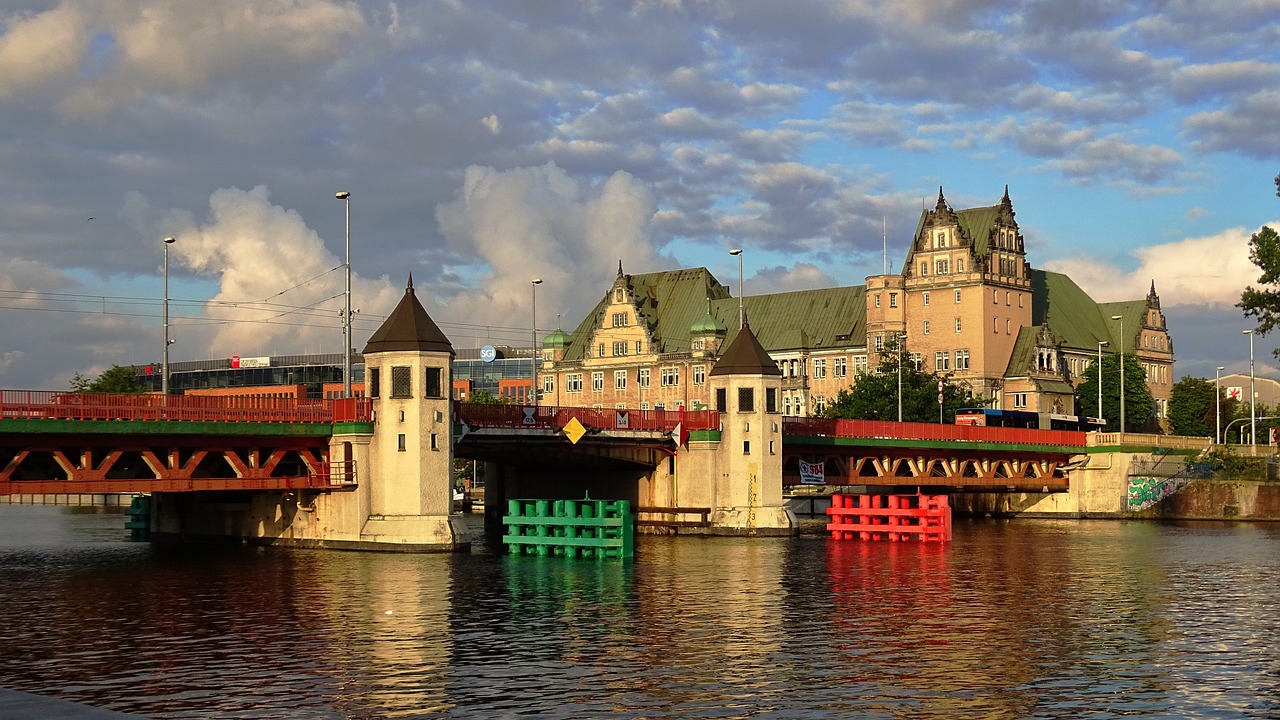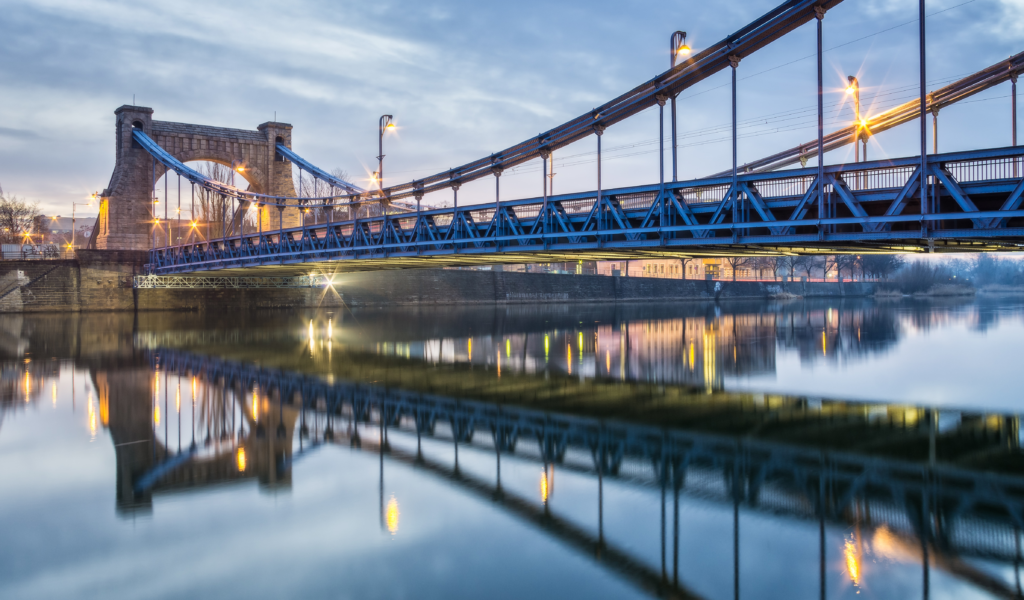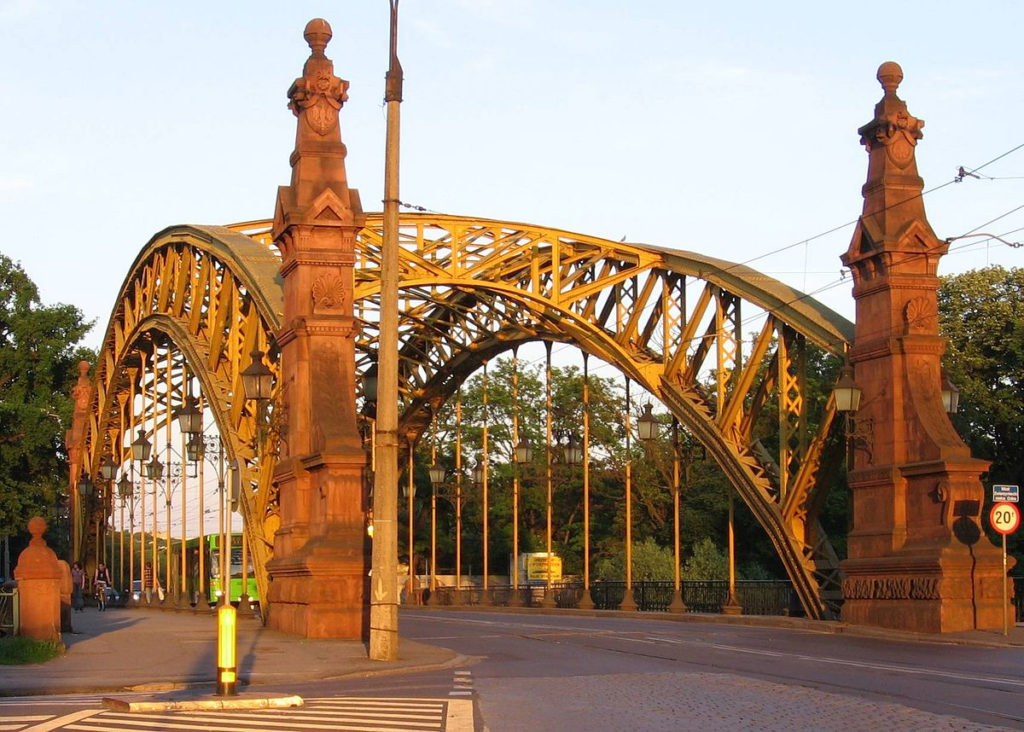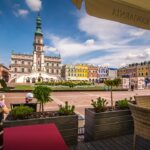
Top 5 Wroclaw Bridges to See
Nestled along the banks of the Oder River, Wroclaw, Poland’s fourth-largest city, is a treasure trove of architectural wonders, cultural delights, and picturesque landscapes. One of the city’s most enchanting features is its collection of stunning bridges that span the river and connect its vibrant neighborhoods. From historic stone structures to modern architectural marvels, Wroclaw’s bridges offer visitors a glimpse into the city’s rich history and dynamic character. Join us as we embark on a journey to discover the top five bridges in Wroclaw that are not to be missed.
Tumski Bridge

For countless years, the bridge has served as a beloved rendezvous point for couples deeply in love. It has become a cherished tradition for them to affix padlocks onto the bridge’s railings, symbolizing their enduring affection, and then toss the keys into the flowing waters of the Oder River.
Tumski Bridge, also known as Most Tumski, spans the gap between Piaskowa Island and Ostrów Tumski. Its steel framework, erected in 1889, occupies the site where bridges have stood since the 12th century, facilitating the connection between two distinct sectors of the city: one governed by ecclesiastical authority and the other by civil governance. Flanking the bridge are statues depicting Saint Hedwig and Saint John the Baptist, adding to its historical and cultural significance.
Visitors can stroll across the Tumski Bridge, soaking in the panoramic views of Wroclaw’s skyline and the peaceful ambiance of Cathedral Island. As the sun sets over the city, the bridge takes on a magical glow, making it the perfect spot for a romantic evening stroll or a leisurely contemplation of Wroclaw’s timeless beauty.
Grunwaldzki Bridge

The Grunwald Bridge, Wrocław’s largest suspension bridge, was built in the early 20th century, before World War I. Originally named the Emperor’s Bridge, it underwent various name changes, including Freedom Bridge and Hitler’s Bridge. Designed by architect Richard Plüddemann, it opened in 1910 with Emperor Wilhelm II in attendance.
Legends abound regarding the bridge, one suggesting the architect, fearing structural issues, tried to halt its opening. Despite dark tales, the bridge has operated flawlessly since. After reconstruction post-World War II, it now boasts a captivating appearance, especially at night when illuminated. Nearby, Grunwaldzki Square, created during World War II, saw the construction of a new airport by Karl Hanke, which led to significant destruction and casualties but only saw two flights, one carrying Hanke as he fled.
Piaskowy Bridge

Constructed in 1861 according to the plans of Ernst Uber, the steel bridge stands as one of Wrocław’s earliest structures of its kind.
Replacing old wooden bridges in the northern part of the city center, the Bridge (Most Piaskowy) once served as the shortest route to Ostrów Tumski. Previously, gates situated at the bridge formed part of the city’s fortifications. As one of the oldest bridges in Wroclaw, it serves as a vital link between the city’s bustling neighborhoods, connecting the historic district with the modern urban center.
Visitors can stroll across the Piaskowy Bridge, admiring its timeless beauty and soaking in the sights and sounds of the river below. With its tranquil ambiance and stunning vistas, the bridge offers a peaceful escape from the hustle and bustle of city life, making it a favorite spot for locals and tourists alike.
Szczytnicki Bridge

Our next destination is the Szczytnicki Bridge, a picturesque pedestrian bridge that spans the tranquil waters of the Oder River in Wroclaw’s Szczytnicki Park. Nestled amidst lush greenery and scenic landscapes, this charming bridge offers visitors a serene retreat from the hustle and bustle of urban life.
Constructed in the early 20th century, the Szczytnicki Bridge is renowned for its graceful arches and decorative flourishes, which reflect the architectural style of the Art Nouveau period. Visitors can stroll across the bridge, taking in panoramic views of the park and its verdant surroundings, or simply relax on one of its benches and soak in the natural beauty of the river and its banks.
The Szczytnicki Bridge is also home to the iconic Wroclaw Fountain, a mesmerizing water feature that delights visitors with its colorful displays and choreographed performances. As the sun sets over the park, the bridge takes on a magical glow, casting a warm and inviting ambiance that lingers long after twilight.
Zwierzyniecki Bridge

The Zwierzyniecki Bridge, connecting the districts of Dębniki and Zwierzyniec in Krakow, was inaugurated for daily use in autumn 2001. It marked the first crossing over the Vistula River in Krakow in nearly three decades, addressing the escalating traffic congestion in the city center. This new addition not only alleviated the burden on neighboring bridges like Dębnicki Bridge and surrounding roundabouts but also diverted traffic away from the town center onto streets such as Książe Józef, Kapelanka, and Monte Casino.
Despite facing challenges such as floods in 2001, the construction of the Zwierzyniecki Bridge proceeded rapidly, completed within just twelve months, two months ahead of schedule.
As one of Wroclaw’s hidden gems, the Zwierzyniecki Bridge offers a unique opportunity to experience the city’s natural beauty and charm. Whether exploring its scenic trails or simply taking in the sights, visitors are sure to be captivated by the timeless allure of this enchanting bridge.
Conclusion:
Wroclaw’s bridges stand as enduring symbols of the city’s rich history, architectural heritage, and natural beauty. From historic stone structures to modern architectural marvels, each bridge offers visitors a unique glimpse into Wroclaw’s past, present, and future.




